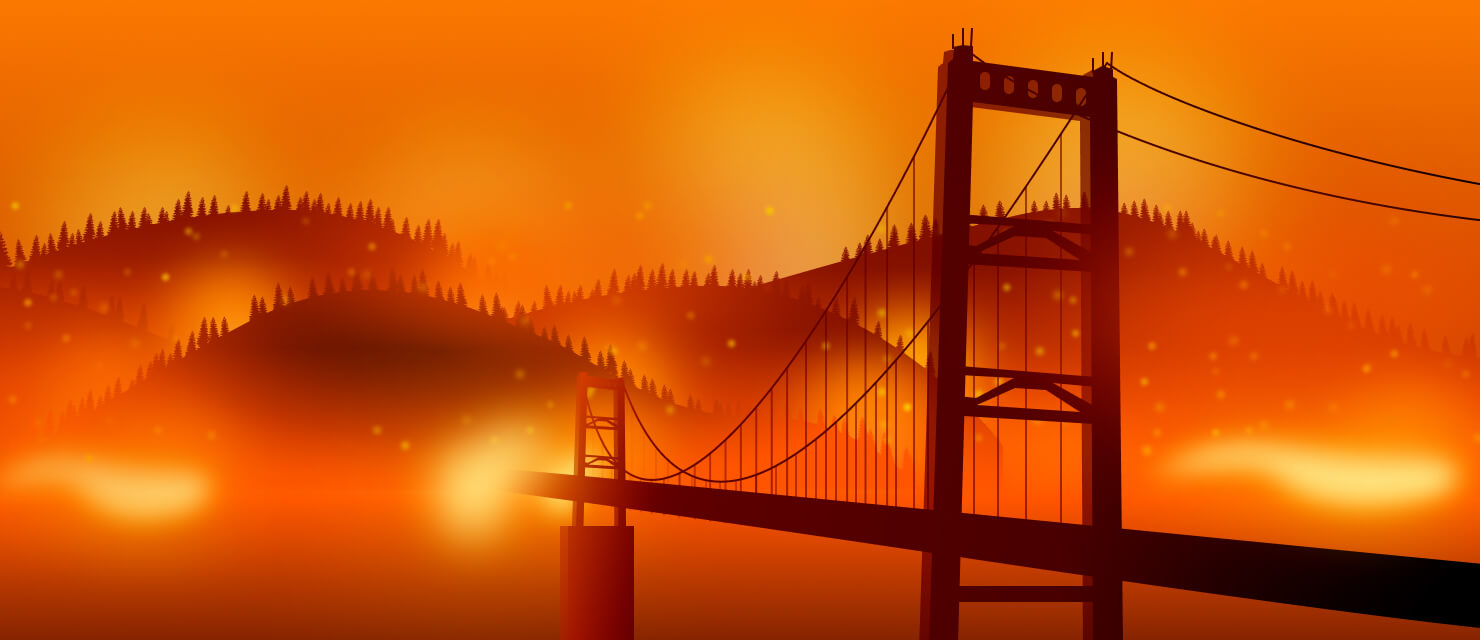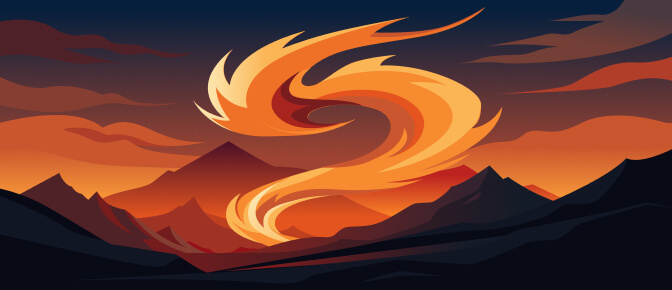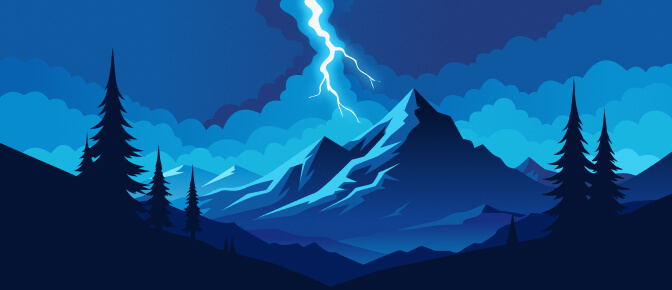The dry climate and steep landscapes make California a favorable place for fires, that’s why it tops the list of the most fire-prone states. Additionally, more than two decades of drought and rising temperatures, worsened by climate change, have made California even more vulnerable to wildfires and brush fires. Interestingly, almost all the greatest fires occur in the state in recent years, specifically, within the last 20 years.
In this article, we are going to share some details about the most devastating wildfires in California.
| Wildfires | Date | Acres Burned |
|---|---|---|
| August Complex | August 2020 | 1,032,648 |
| Mendocino Complex | July 2018 | 459,123 |
| Thomas | December 2017 | 281,893 |
| Cedar | October 2003 | 273,246 |
| Rim | August 2013 | 257,314 |
| Matilija | September 1932 | 220,000 |
| Caldor | August 2021 | 219,060 |
| Witch | October 2007 | 197,990 |
| Klamath Theater Complex | June 2008 | 192,038 |
| Marble Cone | July 1977 | 177,866 |
Matilija Fire, 1932
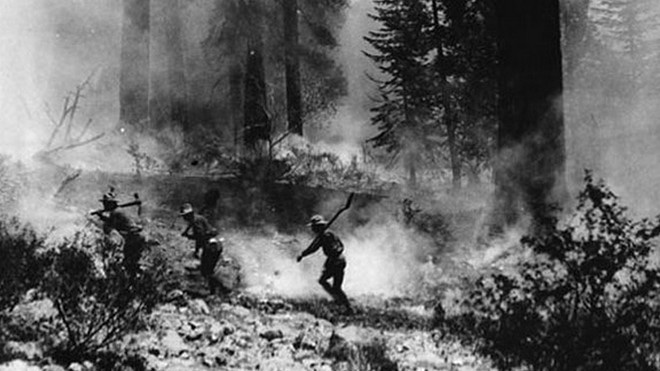 Source: Market Watch
Source: Market Watch
Having erupted in the Santa Barbara National Forest in fall 1932, the Matilija Fire burned almost 220,000 acres of land. The fire’s “birthplace” was near Matilija Creek, from which it got its name. Starting from 1930, the state was experiencing severe droughts. As a result, thorn bushes got caught on fire.
The cause of this destructive fire remains unknown. However, there are assumptions that either a butane gas tank exploded or a hunter did not put out the campfire properly. Despite the size of the fire, there were no deadly victims and burned homes. The final cost of the fire amounted to $120,000 ($2.3 million today).
The Matilija Fire remained the biggest wildfire in the history of California until 2003.
Marble Cone Fire, 1977
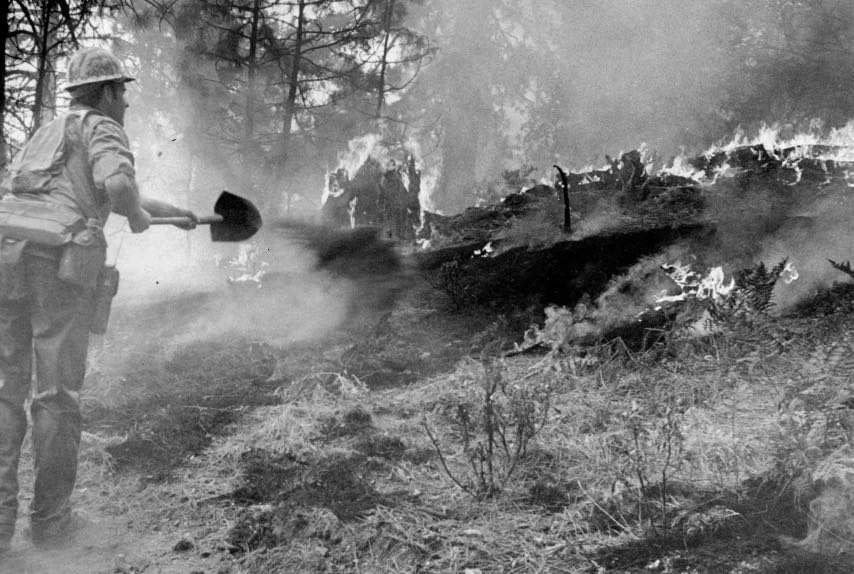 Source: Monterey Herald
Source: Monterey Herald
The Marble Cone Fire was raging for three weeks in August 1977 in the Santa Lucia Mountains of Monterey County. By the time the fire was put out, it had burned around 178,000 acres in the Santa Lucia Mountains. The fire destroyed 90% of the vegetation cover near the Big Sur River, having created the threat of serious flooding in the river valley. However, unlike after the previous fire of 1972, this time the rains were moderate and did not lead to severe flooding. Half a million people were evacuated, and it was the biggest evacuation in the state’s history.
Cedar Fire, 2003
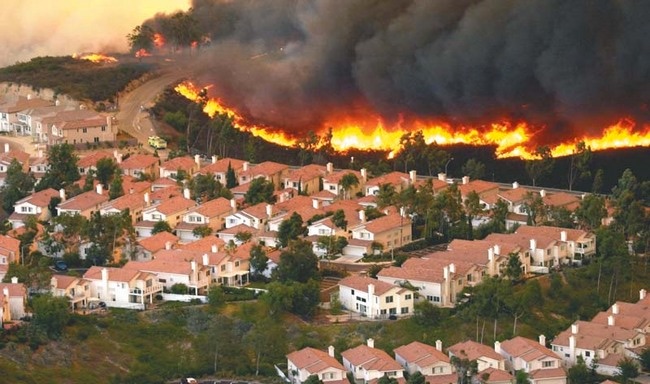 Source: Verisk
Source: Verisk
In late October 2003, a newbie hunter got lost in the forest in San Diego County and lit a signal for help. As a result, one of the most destructive wildfires in the state’s history started. Having burned 273,246 acres of land, the fire had been completely extinguished on November 4, but the resulting smaller fires continued until December 5.
The Cedar Fire spread quickly due to the Santa Ana winds and drought conditions. It ruined 2,820 buildings and took the lives of 15 people. The disaster cost the state $1.3 billion. Cal Fire reported that this blaze was the sixth-deadliest and fourth-most devastating wildfire in the history of the state, as of 2003.
Witch Fire, 2007
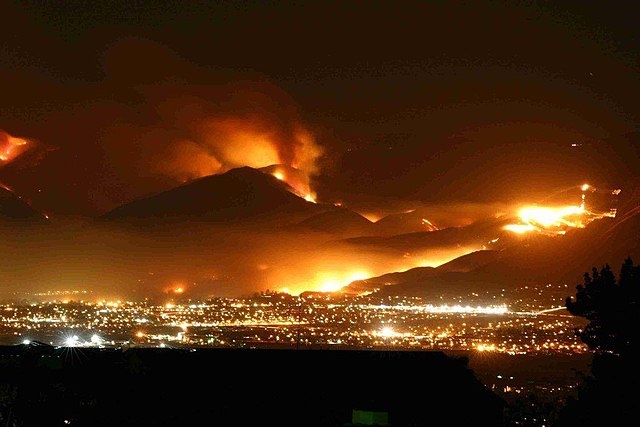 Source: State Farm, CC BY 2.0, via Wikimedia Commons
Source: State Farm, CC BY 2.0, via Wikimedia Commons
The Witch Fire of 2007 is a part of the Witch-Guejito–Poomacha Complex Fire and the biggest fire in this complex. Having started in the Witch Creek Canyon on October 21 and powered by Santa Ana winds, the blaze quickly spread west. On October 22, Witch merged with the Guejito Fire on the west. On October 25, they united with the Poomacha Fire, and on October 26 with the McCoy Fire.
The complex destroyed an area of 247,800 acres. The height of the Witch Fire flames reached 100 feet in some places, which characterized it rather as a firestorm than an “ordinary” fire.
According to the firefighters, the situation was twice as bad as with the Cedar Fire. They had to make difficult decisions about which houses they could save and which they could not.
Klamath Theater Complex Fire, 2008
This complex was the biggest wildfire of the 2008 fire season in California. The disaster began as 11 separate wildfires which then consolidated into one massive complex and burned 192,038 acres of land in Northern California. After the ignition because of a lightning strike, the fire lasted more than 3 months. A total of two firefighters died as a result of the complex fire.
The complex consisted of the following fires and complexes:
- Blue 2
- Siskiyou Complex
- Caribou
- Anthony Milne
- South Yukon Complex
The Klamath Theater Complex was finally extinguished on September 30, 2008, having covered 192,038 acres.
Rim Fire, 2013
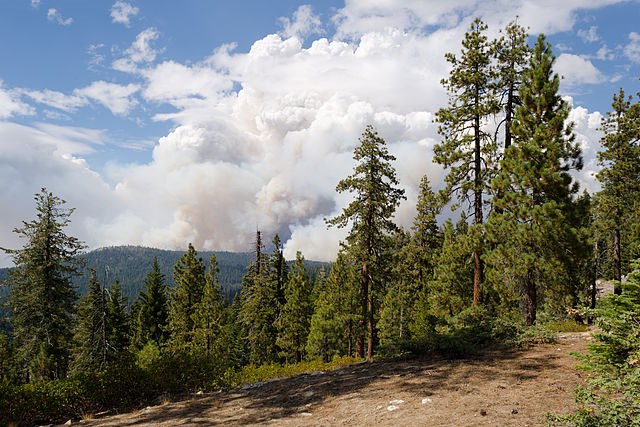 Source: King of Hearts, CC BY-SA 3.0, via Wikimedia Commons
Source: King of Hearts, CC BY-SA 3.0, via Wikimedia Commons
The Rim Fire was a forest fire in the Sierra Nevada. The fire was started on August 17, 2013, by an illegal, runaway hunter in the Stanislaus National Forest. It became the third largest California wildfire, having covered 257,314 acres. On October 25, 2013, the wildfire, which caused total damage of $127.3 million, was completely extinguished.
The exceptional heat and drought of the summer of 2013 in California and previous firefighting efforts in the Sierra Nevada national parks caused the rapid spreading of the fire.
At the time of its discovery, the fire covered 40 acres. But within the next 36 hours, aided by the dense vegetation in the steep gorges of the Stanislaus National Forest, it exploded to 10,000 acres.
Thomas Fire, 2017
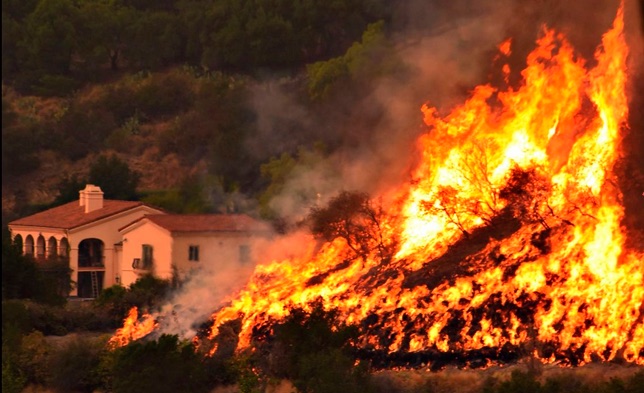 Source: CNN
Source: CNN
The Thomas Fire occurred in Ventura County and Santa Barbara County in December 2017. The fire had burned about 281,893 acres before it was fully extinguished on January 12, 2018. In August 2018, Thomas was “outperformed” by the Ranch Fire, which belonged to the Mendocino Complex.
Almost 4,000 people were taking part in extinguishing the fire, including firefighters from Arizona, Washington, and Alaska. The military and more than a hundred specialists from Australia and New Zealand assisted them. One civilian and one firefighter died directly because of the fire. There were also 21 direct deaths because of the mud and debris flows.
California Wildfires of 2018
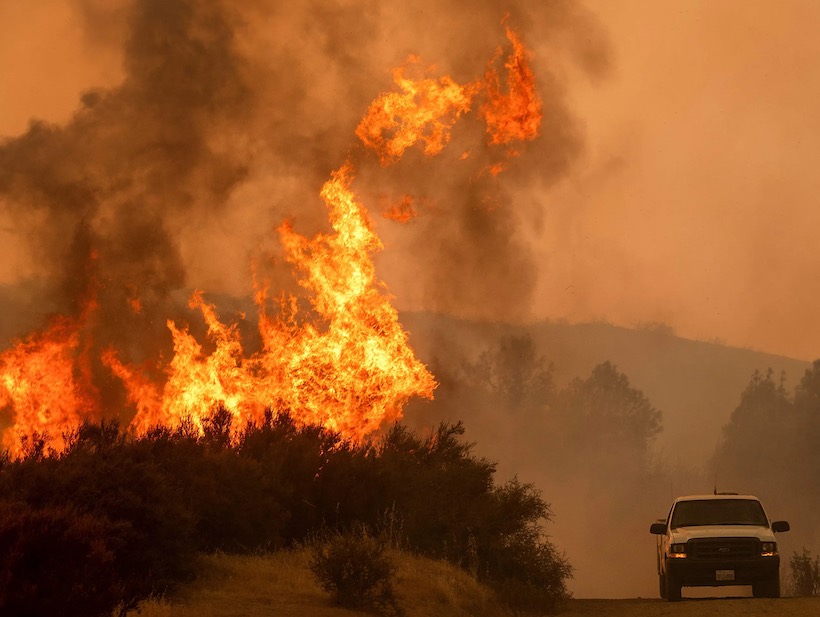 Source: USA Today
Source: USA Today
The wildfires of 2018 in California are recognized as the most destructive in the history of the state. Between November 8 and 12, 31 people died, and 200 are missing. More than 250,000 people were evacuated from the areas engulfed in fire. 29 people died in the Camp Fire (named after Camp Creek in northern California). In this area, the inhabitants of several settlements were completely evacuated. One of the cities, Paradise, was burned to the ground.
The Woolsey Fire burned down the town of the Wild West, a historic settlement that Paramount Pictures had built for filming westerns. Many Hollywood movies were shot here, including the first and second seasons of the Westworld series.
The Mendocino Complex Fire, formed by the union of two separate large fires – River and Ranch - burned a combined total of 459,123 acres.
The fires in southern California affected areas where celebrities lived. Actor Gerard Butler, actress Shannon Doherty, and singer Robin Thicke lost their homes in Malibu. In addition, Miley Cyrus’ house burned down. Cher, Orlando Bloom, and Mark Hamill wrote about the fire approaching their neighborhoods.
California Governor Jerry Brown appealed to President Donald Trump demanding to recognize the situation in the state as a natural disaster. In this case, funds from the federal budget could be directed to eliminate the consequences of the fire. Trump previously claimed on Twitter that the fires occurred due to “negligent forestry management.” He also threatened to withhold California’s federal firefighting funding if the state did not deal with the issue.
On November 10-12, the flames were extinguished by aircraft. However, strong winds caused the fire to spread quickly, and it was difficult to predict the direction of the spread. Firefighters were urging residents of nearby areas to leave their homes. “You can rebuild a house, but you can’t get your life back,” said Los Angeles Fire Chief Daryl Osby.
August Complex Fire, 2020
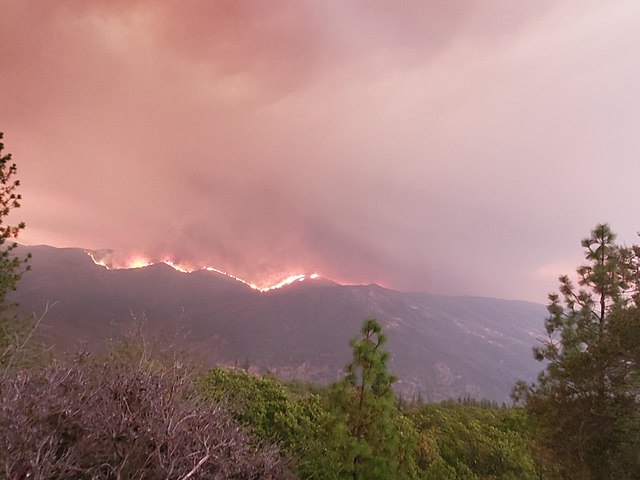 Source: Wikipedia
Source: Wikipedia
The August Complex was a large-scale wildfire that burned in the Glenn, Lake, Mendocino, Tehama, Trinity, and Shasta counties of California. The complex began as 38 separate fires started by lightning strikes on August 16-17. The four largest fires - the Doe, Chatham, Glade, and Hull fires – merged by August 30. On September 9, the Doe Fire became the largest wildfire and the biggest fire complex in California history as of 2020. By the time of full containment on November 12, the August Complex had burned a total of 1,032,648 acres. This area was larger than the state of Rhode Island.
Caldor Fire, 2021
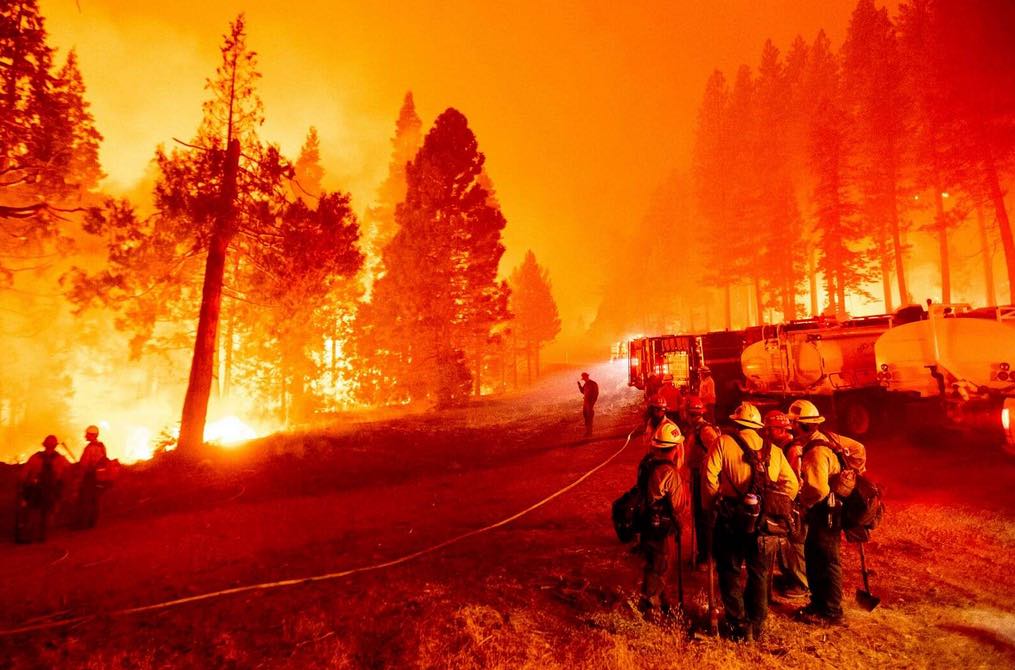 Source: Tahoe Daily Tribune
Source: Tahoe Daily Tribune
The Caldor Fire broke out on August 14. On August 17, the size of the fire had been approximately 6,500 acres but then it rapidly grew to over 53,000 acres within a day. The fire destroyed, among other things, significant parts of Grizzly Flats, a small town with about 1,200 inhabitants. At least two people were seriously injured by the fire. A state of emergency was declared in the affected El Dorado County, and the Eldorado National Forest was closed. The fire brigade spokesman spoke of “unprecedented fire behavior and growth”. Due to the conditions, firefighters had to evacuate residents instead of fire containment efforts. By August 25, around 30,000 people had fled the fire.
McKinney Wildfire, 2022
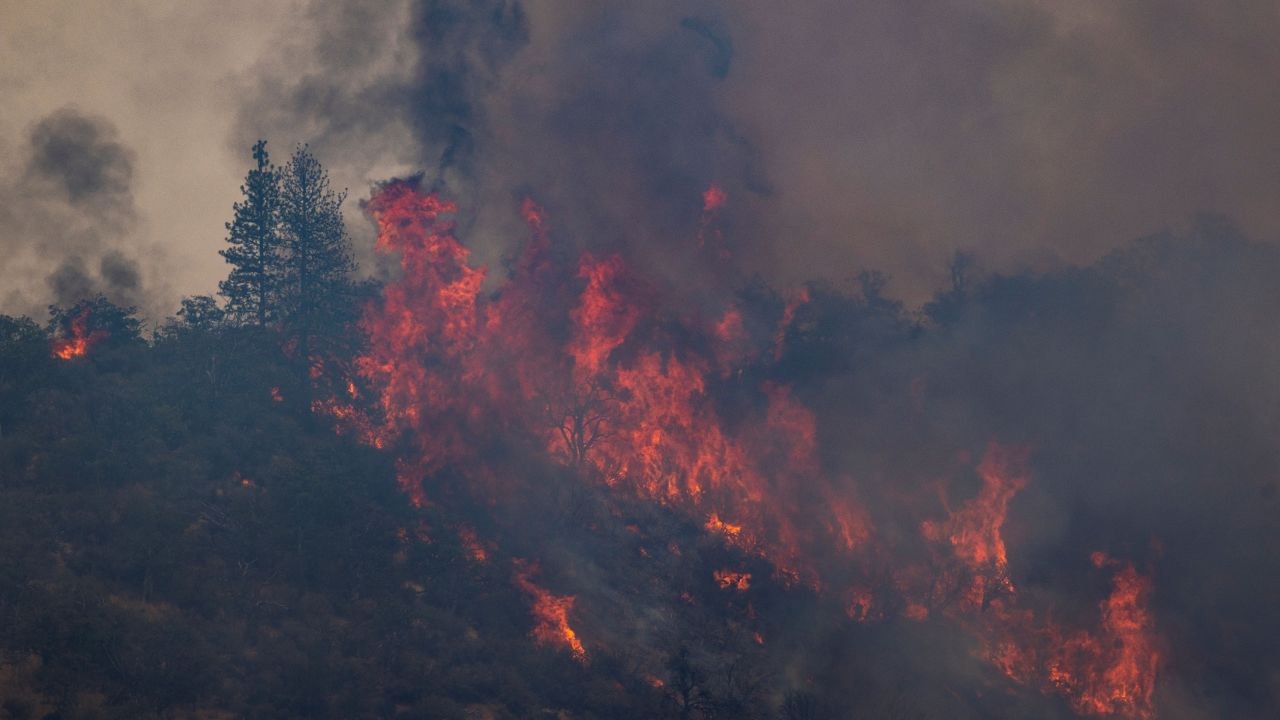 Source: CNN
Source: CNN
The fire called “McKinney” in Siskiyou County has already become the largest fire in California in 2022. Klamath National Park, on the border with Oregon, caught fire on Friday, and over the weekend, the flames burned 51,000 acres of forest.
Due to thunderstorms, heat, drought, and wind, hundreds of firefighters could not contain the fire. According to the local sheriff, on Sunday evening the fire was still contained by zero percent.
Rescuers had to evacuate almost 3,000 local residents. Some residential buildings and infrastructure facilities were destroyed.
The heat from the flames caused the so-called pyrocumulonimbus: a fiery cloud where thunderstorms are born, which in turn cause new fires.
Conclusion
According to the U.S. Forest Service, about 85% of fires in the United States are caused by human mistakes, specifically, unextinguished campfires, incorrect use of equipment, and cigarettes. Unfortunately, no one is 100% protected from human mistakes, so it’s our responsibility to stay safe and be informed about fires beforehand.
With the RainViewer app, you can set up timely notifications about severe weather events and natural disasters nearby, including wildfires. As a result, you will see the wildfires on the map and get warnings if the disaster is approaching you, so you can secure yourself and your belongings. Stay safe with RainViewer.
